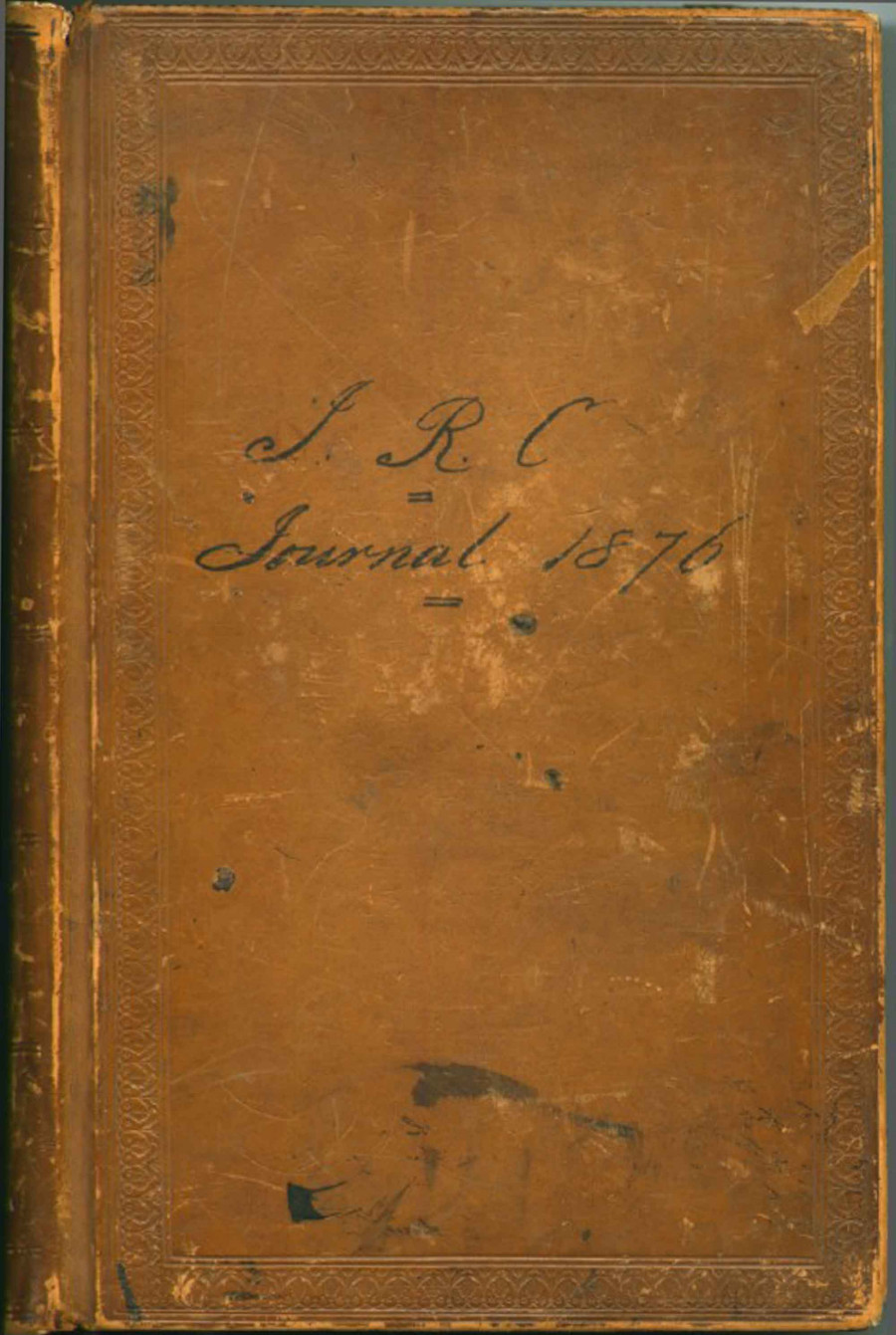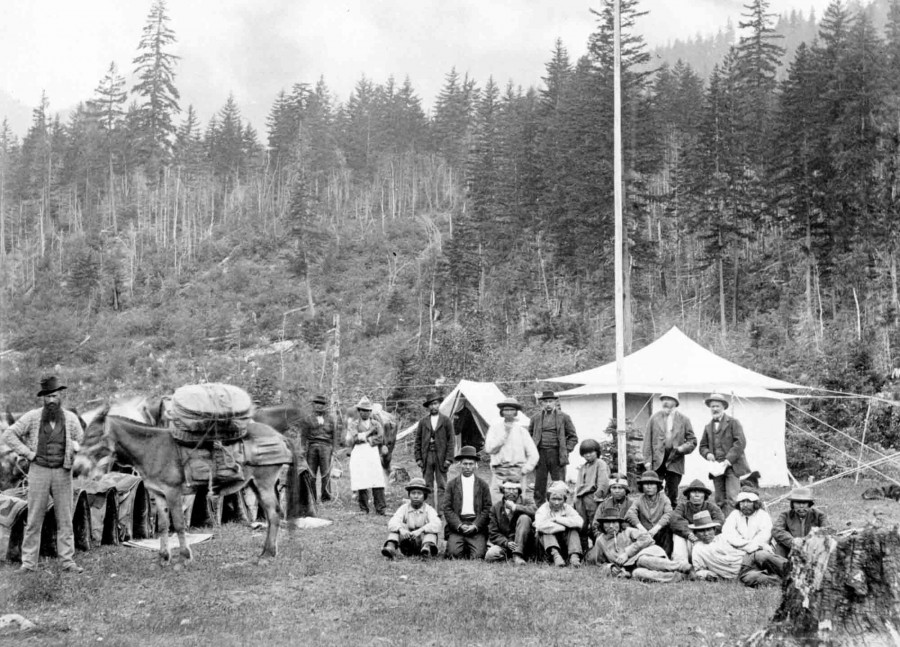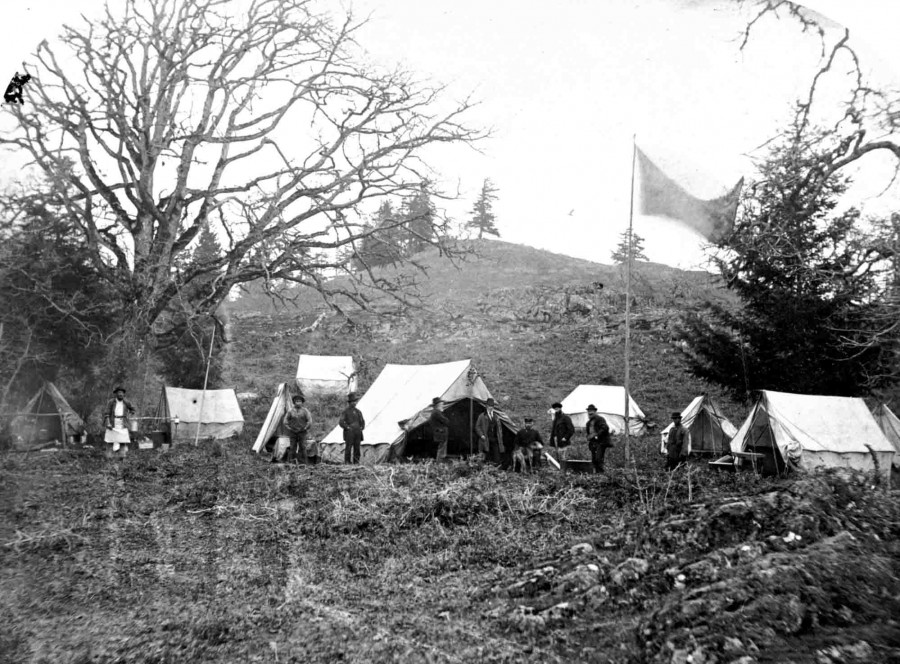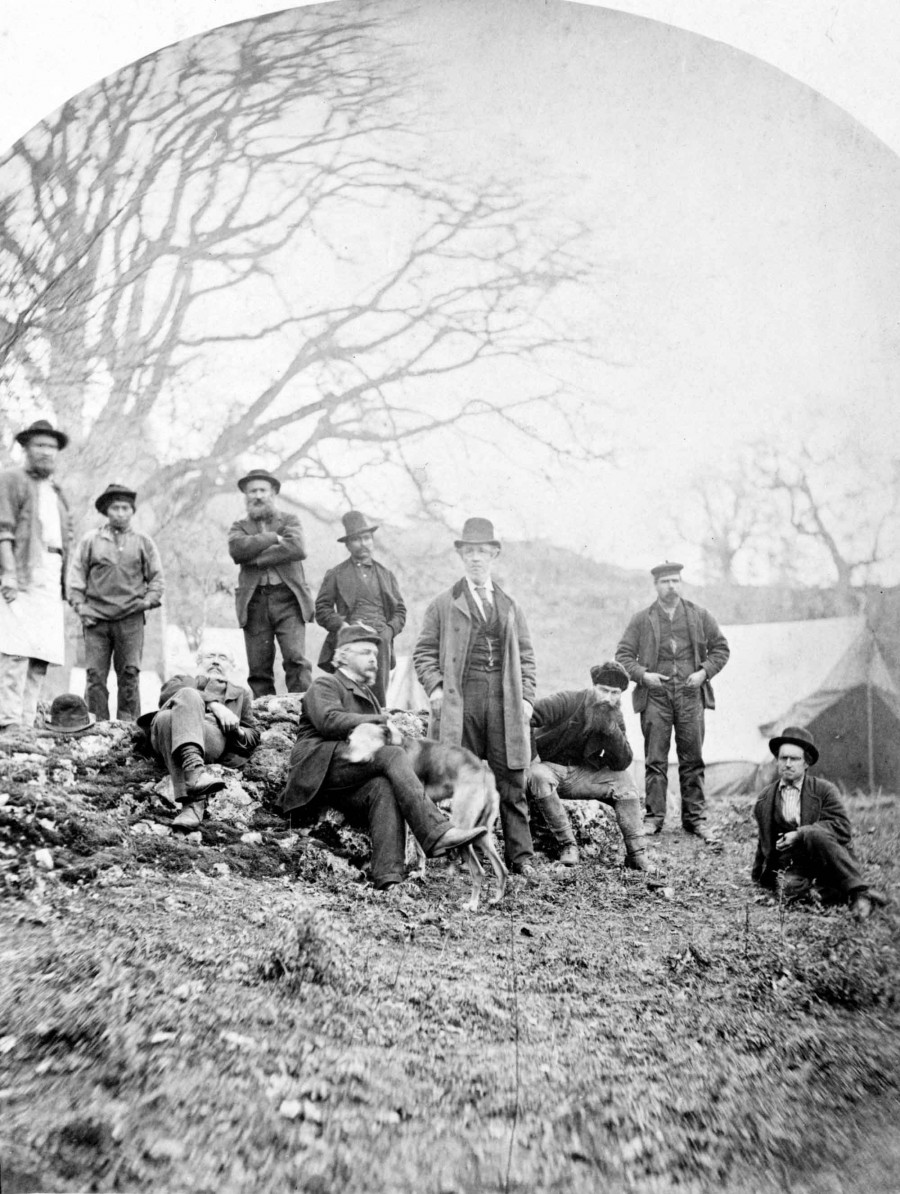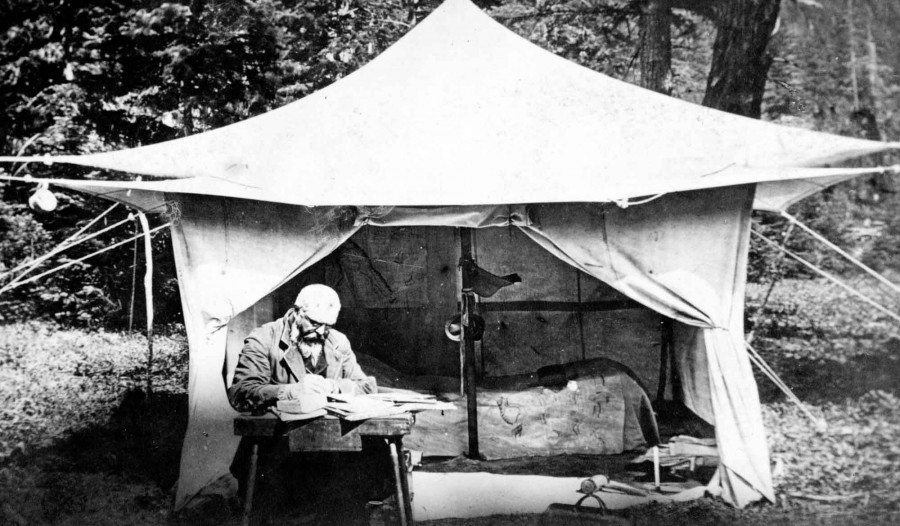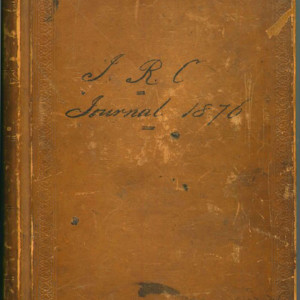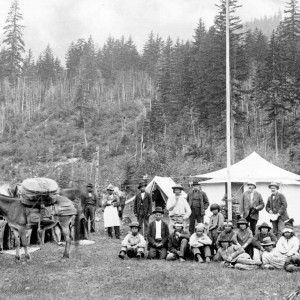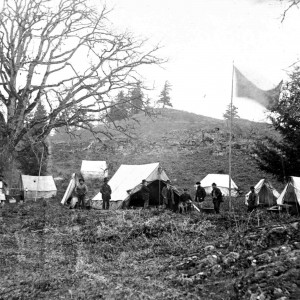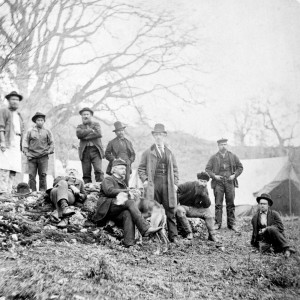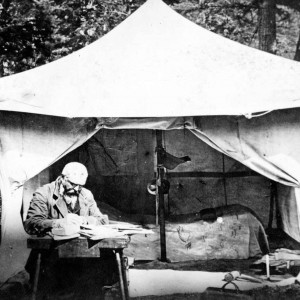Joint Indian Reserve Commission: Journal of Proceedings: Vol. I
- Date:
- 1876-1877
- Record:
- PABC GR-3732
- Materials:
- Journal, with letters
This lost journal was recovered after years of negotiations with a private party in Nova Scotia, ending with its purchase by the Royal BC Museum for the BC Archives. It documents the first year of operation of the Joint Indian Reserve Commission (JIRC) which consulted with Indigenous communities and established Indian Reserves on the mainland and Vancouver Island.
After British Columbia entered Confederation, the colonial process continued with the expansion of the federal Indian Reserve system. The province and Canada established the JIRC and sent them out to meet with Indigenous communities to fix boundaries for Indian Reserves. Canada appointed Alexander Caufield Anderson. British Columbia appointed Archibald McKinley. They both agreed upon Gilbert Malcolm Sproat.
Later in 1878, to cut costs, Sproat became the sole IRC commissioner. His personal viewpoint and correspondence shaped our understanding of what happened. But now, with this journal, we see a more complex view of the first year of the JIRC.
This pivotal cultural document is a daily account of the JIRC’s travels, as they met with Indigenous communities, first on the mainland and then along the east side of Vancouver Island. They traveled by ship and horseback, slept and negotiated in tents and clearings, and held multi-day meetings with each Indigenous community. Elders met with them to discuss lands needed for traditional seasonal activities. Frequently colonial reserves were expanded. Conflicts with settlers were discussed and resolved. The JIRC then issued a “Minutes of Decision” to the Department of Indian Affairs and the Province’s Chief Commissioner of Lands to set reserve boundaries.
This is a narrative of the historic oppressive process of colonialism under the Indian Act. Yet it is more than that. It reflects Indigenous expectations and trust that the JIRC would continue the older fur trade and colonial relations. Elders came to discuss more than land boundaries. It includes letters to the JIRC asking them to facilitate discussions about fish weirs and log drive conflicts on the Cowichan river; the Nanaimo mayor asks for land to accommodate northern Indigenous travellers; there is a plea that they should intervene in a domestic abuse case; and a recounting of a personal life history ends with a request the commission intervene to free his sons. Continuity to the Douglas Treaties is found when Sir James Douglas meets with Beecher Bay (pp. 286-288) to confirm his promise made years before, just before finances ended the colonial treaty process. It would be his last political act. He died two months later. Inserted here and there you will find small maps and personal correspondence that arrived in the camp mailbag.
The authentication of this document involved a paper conservator and a historian examining the internal evidence and physical clues in the ledger’s construction. Its content was tested against short diaries kept by commissioners. It ends Thursday, June 7 and Volume II opens five days later.
This is the first viewing of this document in British Columbia in over half a century. You can read the entire journal online here. Our partners at Library and Archives Canada have digitized Volume II here.
Images in order:
1. Front cover. JIRC: Journal of Proceedings, 1876-1877. BCA GR-3732.
2. Indian Reserve Commission’s camp, Spuzzum, 10 miles above Yale. BCA E-01930.
3.“Encampment of the Indian Commission.” BCA C-05424.
4.The Joint Indian Reserve Commission: foreground L-R: Gilbert Malcolm Sproat lying, Archibald McKinley seated with dog, AC Anderson standing, surveyor Edward Mohun seated. Back row L-R the cook; indigenous youth; census taker George Blenkinsop, unknown Indigenous man (the translator?) and two others. Photographer: Richard Maynard 1877. BCA C-05426.
5. Indian Commissioner Gilbert Malcolm Sproat at work on the Fraser River. BCA C-08858.
